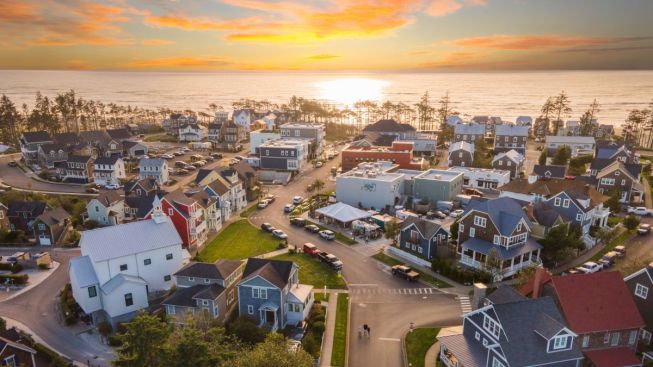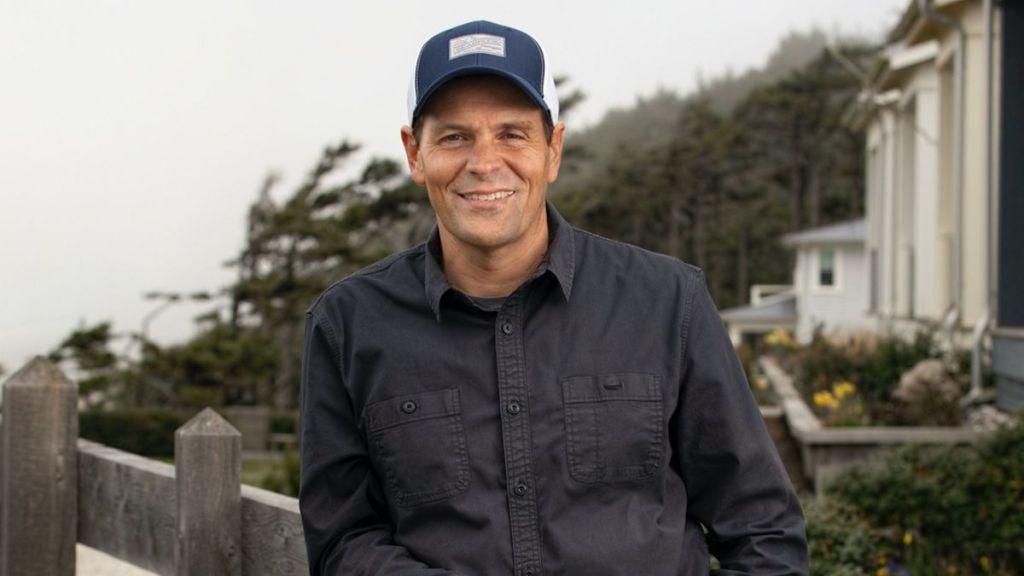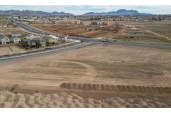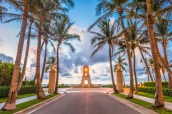Based on New Urbanism design, Casey Roloff set out to build a town from scratch on Washington shore. Now with 600 homes and more to come, Seabrook is known for its charm and mix of comfortably placed retail and commercial amenities amongst 22 parks and access to nature.
Now with over 20 years of growth and even bigger plans ahead, Roloff says, “It’s been truly surreal. While we always had full confidence it would succeed, seeing Seabrook grow and the joy it brings homeowners and guests is still a remarkable experience.”
As a home builder and Seabrook’s CEO and founder, Roloff shares more on designing the seaside Pacific Northwest haven below.
What led you to start building homes?
I saw an opportunity to create homes that were smaller in size but richer in character and purpose. I was inspired by “The Not So Big House” book and the idea that thoughtful design can make a home feel more spacious, meaningful, and connected to how people really live. That philosophy sparked my passion for building intentionally crafted homes that prioritize quality over quantity, and in turn a town that focuses on a human-centered vision with walkability and mixed-use spaces, embracing sustainability, inclusivity, and fostering community.

Wing Walker Photography
An aerial view of Seabrook on Washington's coast.
How did Seabrook come about?
We wanted to raise our kids in a walkable neighborhood, somewhere they could safely explore, with a strong sense of community and ideally, by the ocean. We learned about the art of town building from Seaside, Florida, and were inspired to build our own town on the Washington Coast. In 2002, we found an opportunity with 250 acres of over logged land and self-financed to get the project going. In 2003, we started designing and building what would become a sustainable haven for full-time residents, vacationers, and day trippers—a walkable urban oasis seamlessly woven into nature. Seabrook now has a town center with curated restaurant and retail offerings, abundant amenities for owners and guests, 22 parks and miles of trails, and more than 600 homes, and 300 of those vacation rentals.
What is the New Urbanism movement?
First, there’s nothing new about it, it basically applies the same urban design principles that were used to build the most beautiful towns, villages, and cities around the world before the car. The car distracted us from these design principles, which created a suburban, auto-centric built environment. New Urbanism is based on building all of a resident’s basic needs within a 5 to 10 minute walk and building roads and infrastructure to greatly reduce car speeds; offering a wide variety of housing types and missing middle housing; the transect design philosophy; and public space or ‘third places’…the places we want to be from main street, to town square, neighborhood parks, the bookstore, or corner pub. These places are extensions of our living rooms and allow us to live in smaller spaces because our lives are much richer when we live in a walkable neighborhood.
With the challenges our country faces today (affordability, environmental, social), we need to use these design principles more than ever. Creating higher-density, walkable neighborhoods can not only be more affordable but also provide a much higher quality of life for residents.
What are the top three ways to make a community walkable?
The top three ways to make a community more walkable begin with designing shops, restaurants, schools, and other basic needs within a five-minute walking and biking distance. Next, design narrow, pedestrian-scale streets that calm drivers and make people walking and cycling feel safe. Finally, build public outdoor rooms and gathering spaces for neighbors to get to know each other and that become extensions of their living rooms like parks, promenades, courtyards, playgrounds, and courts.
Is there an estimated pipeline of homes and retail to come?
Two new, complementary villages with a real estate value of $1.5 billion have been approved and will soon be seamlessly connected to Seabrook’s original phase. This marks an exciting next chapter in our vision. We’re not just expanding, we’re purposefully building what will become Seattle’s version of Carmel, California, as Washington’s only premier oceanfront destination. The continued growth and development of the town is an investment that aligns with our commitment to creating a one-of-a-kind Pacific Northwest beach town and meeting the desire for more opportunities to live, work, and vacation.

Focused Media Collective
The town and its amenities are set within nearly 400 acres of Seabrook’s coastal forest that's connected to 600 acres of public land.
What types of product does Seabrook build/offer?
In Seabrook, we offer a wide variety of homes and missing middle housing. Everything from small cabins to cottage courtyards, townhouses and row houses, live-work and lofts (condos) above retail units, small compounds and penthouses, mansions, and carriage houses. You will find homes from 200 square feet to over 4,000 square feet in 15 microneighborhoods—from beachfront to the bustling town center, and the serene Farm District to the forest. Our oceanfront neighborhoods provide unobstructed panoramic water views while our Fernwood neighborhood and Farm District are steps from miles of biking and hiking forest trails. There is really something for everyone.
What are the next milestones for the town?
Over the next three years, we will complete the town center and double the retail offerings. Other major milestones include an upcoming community center, a walk-in medical clinic, and a school that will make full-time living in Seabrook easier than ever. We’re also in the process of launching a regenerative farm that will supply our restaurants and full-service grocery store. It’s rewarding to see the contrast between completing the urban town center while cultivating a farm that supports sustainable living.



